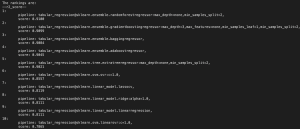Overall progress:
The webapp has been successfully integrated with the optimization pipeline. The machine learning pipeline was improved with better accuracy.
Significant risks and risk management:
Risk: Slow convergence of across multiple epochs
Description: The multi-period DDP algorithm is converging with the correct direction but extremely slowly. Furthermore, the battery is slightly violating its constraints at certain time periods.
Severity: The convergence issue means the algorithm takes too long to test effectively on different test cases and is a high-severity issue.
Resolution: To fix the underlying issue, I will implement multiple tests that simplify the testcase to 2 epochs and aim to produce the expected behavior. I will then analyze the relevant battery equation gradients at each period using my plotting program and verify correct behavior. I will use the errors in the outputs to identify the underlying cause and then analyze the code to locate and fix the issue.
Changes to the existing design:
There are currently no significant changes to the existing design.
Changes to the project schedule:
The optimization verification testing is behind schedule by 2 weeks due to the convergence issue, and more intense work will be needed.

